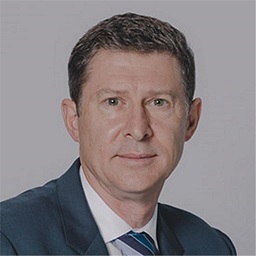Under the umbrella of Saudi Vision 2030—a comprehensive plan to diversify the economy and promote private-sector growth—the country is reshaping itself with initiatives such as the Line and the Red Sea Project. The Line is a planned linear megalopolis that, in its original conception, would stretch across 450 kilometers of the northwest Saudi coastline. The Red Sea Project is a 50-resort portfolio investment in technology-led tourism.
Opening the entertainment and cultural sectors has already fueled more travel spending and tourism. In 2022, 77.8 million domestic tourists visited Saudi Arabia—an increase from 46.4 million tourists in 2015.
Significant investments in infrastructure and tourism projects are being delivered with an eye toward energy transition. These mega projects aim to source 100% renewable energy generated from solar power—underpinned by the largest battery storage facility in the world.
Building a Tourism and Investment Ecosystem
The Saudi government isn’t just throwing dollars at these projects but strategically building an ecosystem that attracts both tourists and investors.
For example, Saudi Arabia has taken steps to streamline bureaucratic processes and reduce red tape, simplifying business registration procedures, improving access to permits and licenses, and enhancing overall transparency. In addition, new foreign-investment laws allow for complete foreign ownership of private companies (49% for publicly listed companies) and incentivize investors with tax breaks and residency permits. These reforms aim to create a more conducive environment for foreign investment, diversifying Saudi Arabia’s economy and supporting sustainable long-term growth.
Equity investors are starting to catch on, even though many are still underweight Saudi Arabia, which only joined the MSCI Emerging Markets Index (MSCI EM) in 2019. As the allure of China weakens and Russia remains sanctioned out of the Index, Saudi Arabia is emerging as a potential winner. The MSCI Saudi Arabia advanced by 10.7% in 2023, while the MSCI China fell 11.2%, both in US-dollar terms. Meanwhile, Saudi Arabia’s weighting in the MSCI EM has risen from 1.4% in May 2019 to over 4% today. Underscoring its growth is the increase of the Middle East to more than 7% of the MSCI EM.
Similar Efforts Are Afoot in the UAE
Like Saudi Arabia, the UAE has undertaken efforts to diversify its economy. Situated at the crossroads of Europe, Asia and Africa, the UAE serves as a hub for trade and commerce. Its strategic location facilitates access to global markets, making it an attractive destination for multinational companies looking to establish a presence in the region.
The UAE has invested heavily in infrastructure and technology. Projects such as Expo 2020 Dubai, Abu Dhabi’s Yas Island development and Dubai South’s Aviation District showcase the country’s commitment to enhancing its infrastructure to support economic growth and attract foreign investment.
Other initiatives demonstrate the UAE’s commitment to fostering innovation and attracting tech-driven investment. These include Dubai’s Smart City project, Abu Dhabi’s Hub71 start-up ecosystem and the establishment of research institutes and technology parks.
To attract foreign investment, the UAE is introducing visa reforms and residency programs. The “golden visa” initiative provides 10-year residency permits aimed at encouraging sought-after workers to establish deeper ties to the region.
Tourism and immigration are also growing. Two telling indicators of this shift have been private-school enrollment growth in Dubai (Display), a proxy for growth of the expat community, and increased tourism volume. Tourist visits to Dubai grew at a compound annual growth rate of 5% between 2014 and 2019 and were expected to be 3% above pandemic-era levels by the end of 2023.

